
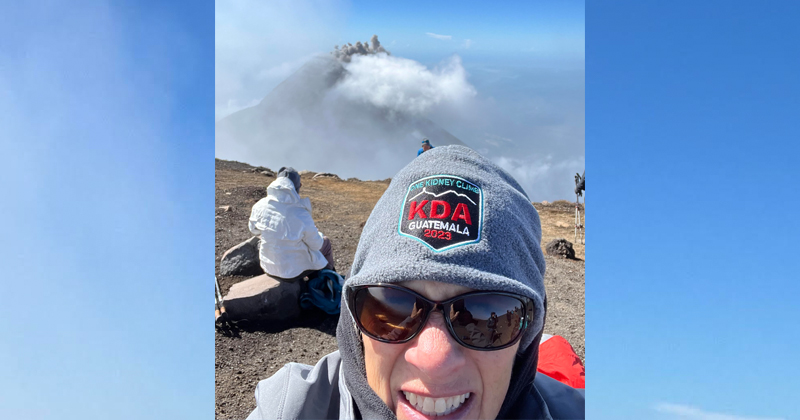

Climbing for a Cause
UD alumna scales volcanoes to raise awareness for organ donation
April 08, 2024
In December 2023, Jenny Godnick, EHD87, ate pizza cooked on molten lava rocks at the top of an active volcano in Guatemala. It tasted, as you might expect, “incredible.” But it wasn’t the promise of an unconventional meal that lured the Blue Hen skyward. Nor was it the breathtaking view. She’d traveled to the land of eternal spring to summit three peaks in six days, with one mission in mind: saving lives.
“I’m spreading the word,” she says. “Following a living kidney donation, you can do the same things you’ve always done. You can do bigger, better, harder things.”
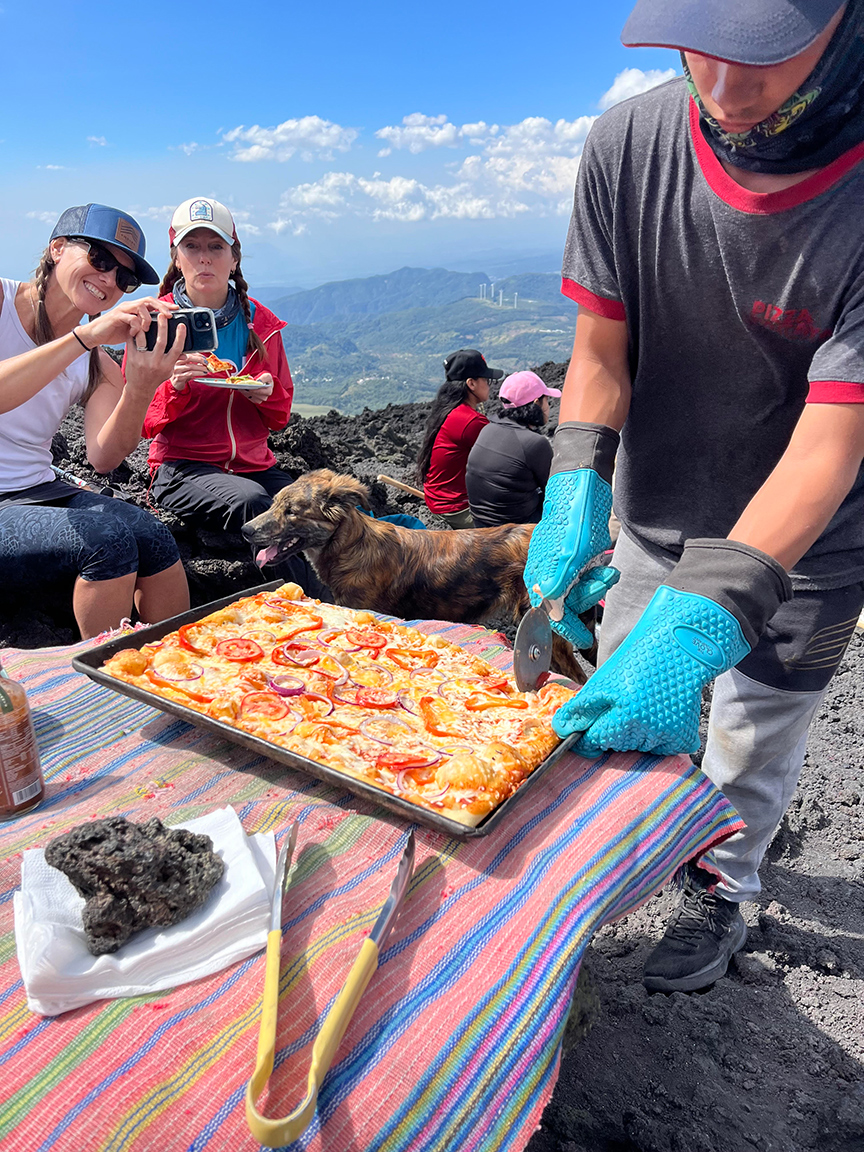
In 2012, Jenny’s beloved brother-in-law—a kayaking, hiking, music-loving adventurer named Steven Cohen—faced a grim reality. The 64-year old’s scleroderma, a rare autoimmune condition, had attacked both his kidneys. He reached out to loved ones, hoping a family member might donate him one of theirs. Godnick hadn’t been aware at the time that a living person could even do such a thing, but she spent two months educating herself on the process.
Desperate to save Cohen from a grueling routine—three days per week hooked up to a dialysis machine in order to clean his blood—she submitted to 48 hours of medical and psychological testing. While clinicians determined Godnick to be a healthy candidate for donation, they also discovered she did not have the same blood type as her brother-in-law, meaning Cohen’s body would have rejected her organ. So Godnick, 49 at the time, signed up for the National Kidney Registry, a program that facilitates kidney exchanges between people across the country. In April of 2014, as part of a 24 person chain (12 donors and 12 recipients), Godnick underwent surgery. She gave her kidney to a stranger named Barbara in a New York suburb. Cohen, in return, received a functioning kidney from another participant.
Following a living kidney donation, you can do the same things you’ve always done. You can do bigger, better, harder things.”
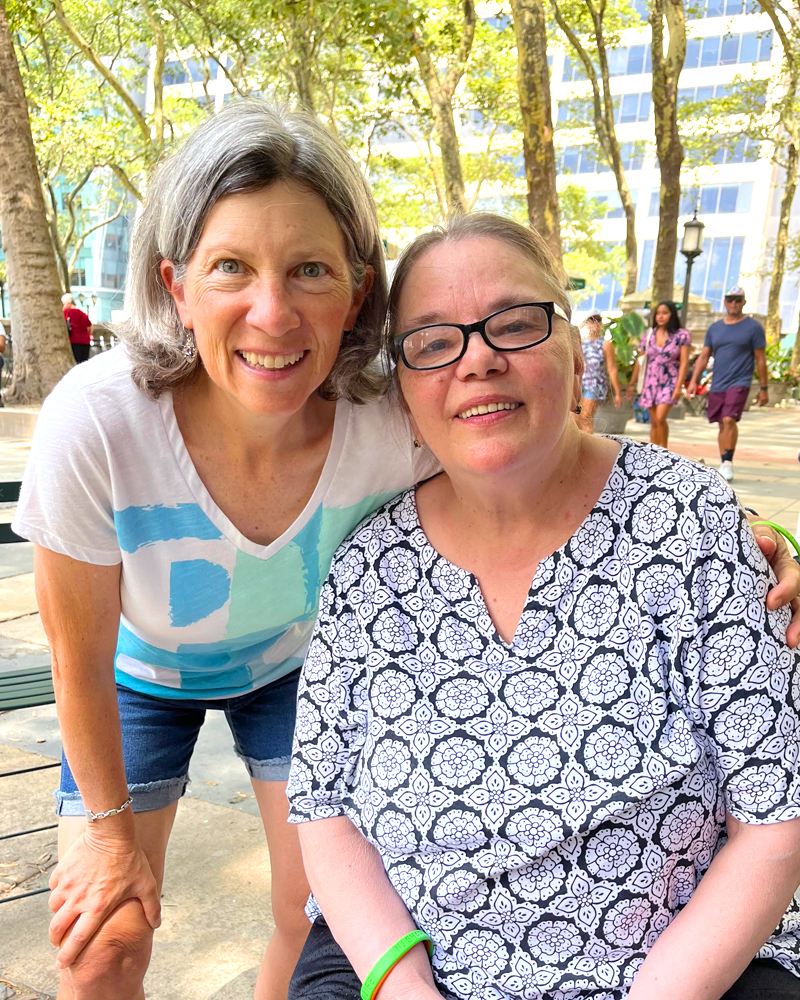
Godnick’s operation called for two nights in the hospital and three weeks away from her job as a school counselor in a New Jersey district. But she was out of bed and walking within 24 hours. Nine weeks post surgery, she completed a triathlon.
“In the beginning, I was focused on one thing: I just wanted Steven to be healthy,” Godnick says. “But about a year after the operation, I began connecting online with other donors and recipients, and I’m at a loss for words. This has enriched my life in so many ways.”
Through the New Jersey Sharing Network, an organization that facilitates organ donation, Godnick learned more about a pressing need: Approximately 100,000 adults and children are currently awaiting an organ donation in the U.S., and 17 per day will die while waiting.
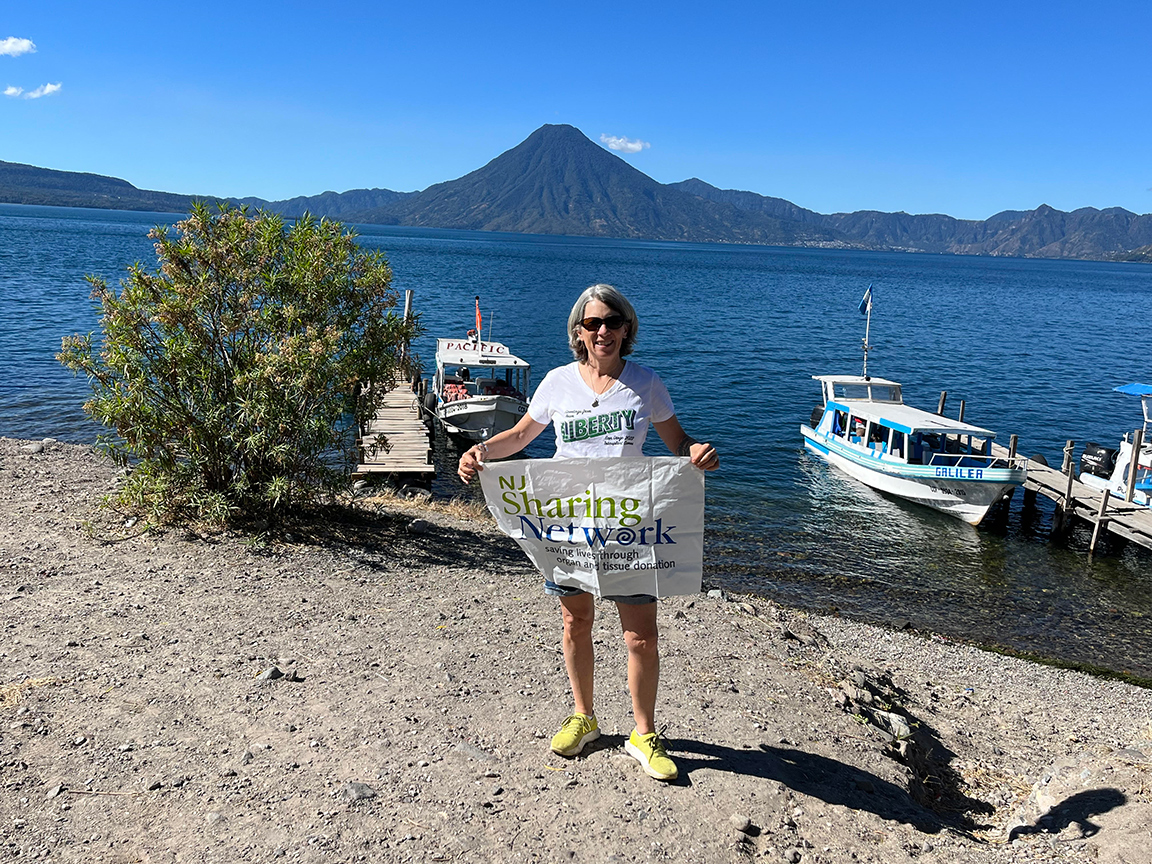
She also connected with the Transplant Games of America, an Olympics-style celebration held every two years in which thousands of recipients, donors, families and other supporters from around the globe raise awareness by competing in a variety of events. Godnick has traveled to Salt Lake City and San Diego to bowl, swim, run and play pickleball.
About two years ago, Godnick discovered Kidney Donor Athletes, or KDA, a community of individuals who accomplish great physical feats to raise money and inspire more people into living donation. Through this group, the New Jersey-based Blue Hen signed up for an excursion: scaling three Guatemalan volcanoes back to back: Picaya, Atitlan and—with the highest summit of 13,000 feet—Acatenango. Godnick, now retired, spent 10 months training for the week-long trip (read: wearing a 20-pound pack while on her gym’s elliptical machine) before embarking with 17 strangers from across the nation, each with their own donation story.
Living donation isn’t for everyone, but everyone can be informed about the process, and maybe that knowledge gets passed onto someone else.”
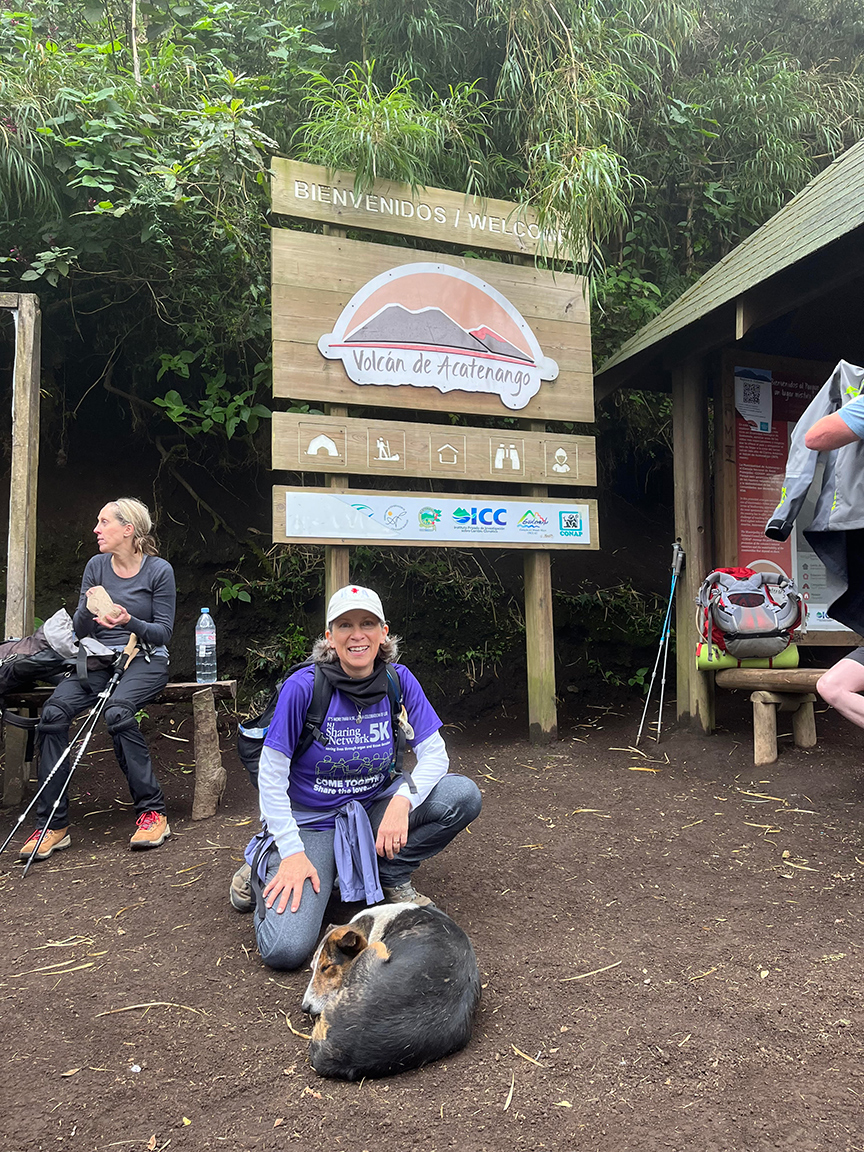
The adventure required mettle. The group climbed between six and 12 hours per day, navigating through intense cloud cover with limited oxygen and bracing against wind gusts up to 50 miles per hour. At one point, Godnick, who weighs only 115 pounds, thought she might “blow off the mountain.” Temperatures ranged from 30 to 70 degrees. Most evenings, the group stayed in local hotels, but they did spend one night at a base camp 12,000 feet above sea level, recuperating with heaping portions of lentil stew. When things got tough, Godnick leaned on lessons gleaned during her time at UD.
“I had a wonderful experience at the University both socially and academically,” she says. “And, because I went through the Army ROTC program, I developed grit and resilience.”
When she reached each summit, the villages of Guatemala beneath her, Godnick looked out over the horizon. At one point, she could see constant eruptions from the nearby Fuego volcano, located along the Pacific Ring of Fire. One thought crossed her mind: “Steven, look where I am.”
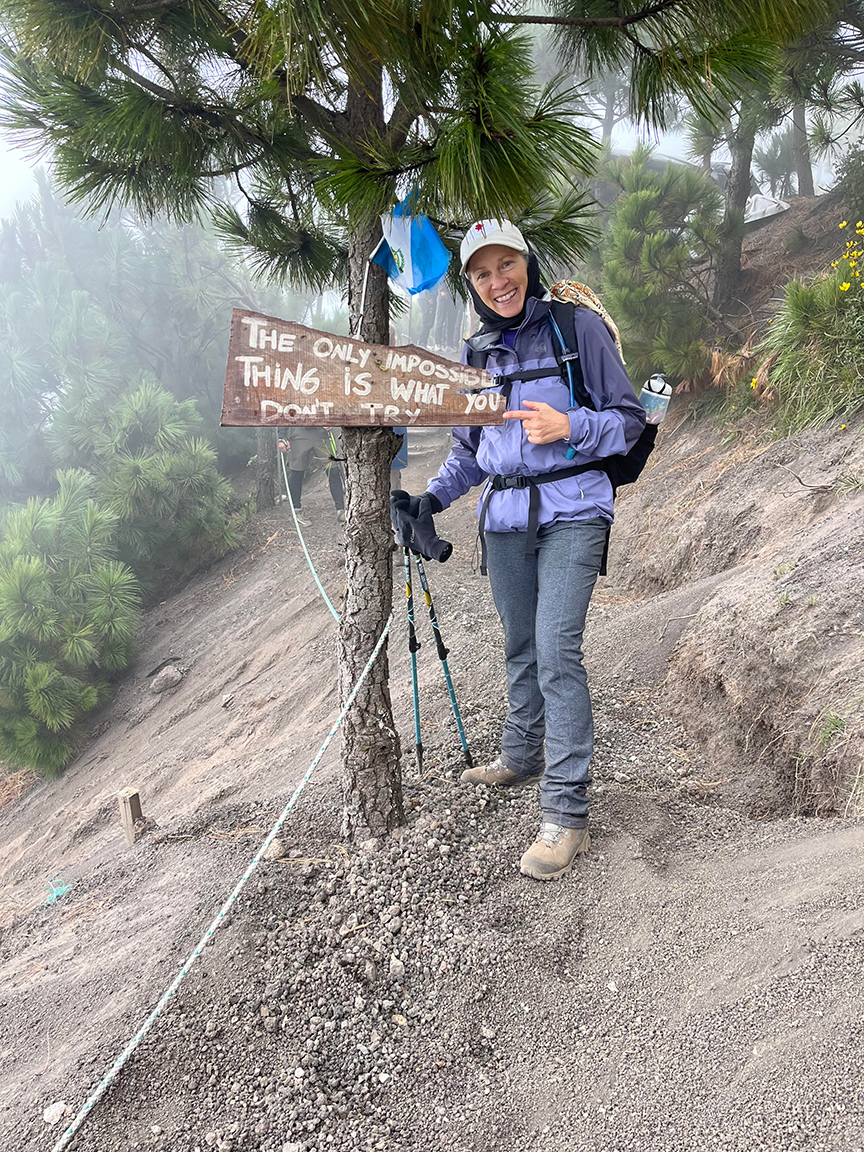
While Cohen died from his disease in 2017, Godnick is grateful for the three years her brother-in-law got to spend off of dialysis, following his transplant surgery. She feels sure he’d be her number one supporter in the volcano-climbing effort, and in all her efforts to build a passionate donor community.
“Our group came together as strangers, but by the end of the trip, it was like we’d known each other our entire lives,” Godnick says. “We encouraged one another and cheered for one another. It was truly of the most powerful things I’ve ever experienced.”
The 18 climbers raised nearly $90,000 for KDA, but Godnick isn’t done yet. While she hasn’t settled on her next grand adventure, she’s committed to raising awareness in new ways.
“Living donation isn’t for everyone, but everyone can be informed about the process, and maybe that knowledge gets passed onto someone else,” she says. “That’s how we lower the number of people waiting for an organ in this country. That’s how we save lives.”
Contact Us
Have a UDaily story idea?
Contact us at ocm@udel.edu
Members of the press
Contact us at 302-831-NEWS or visit the Media Relations website


